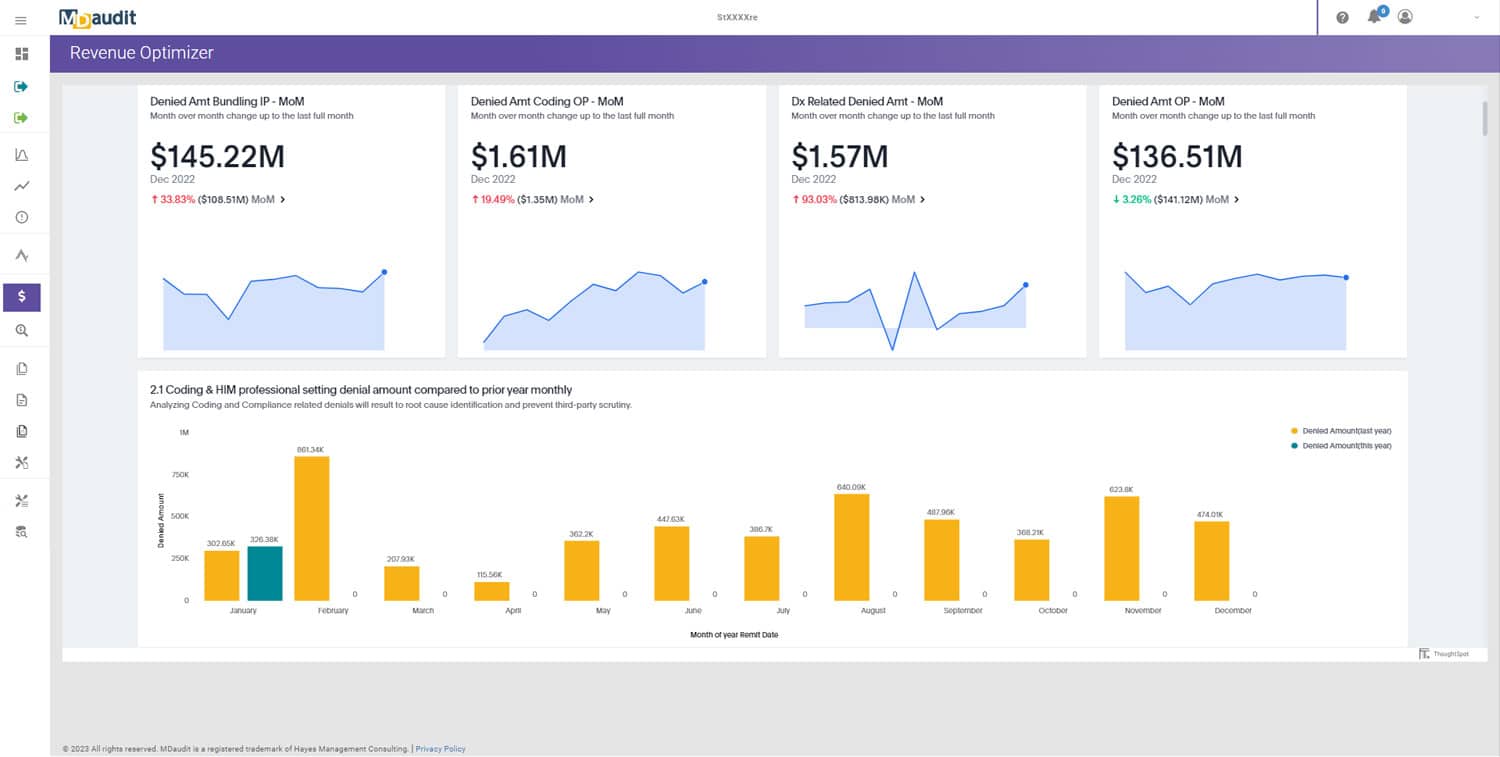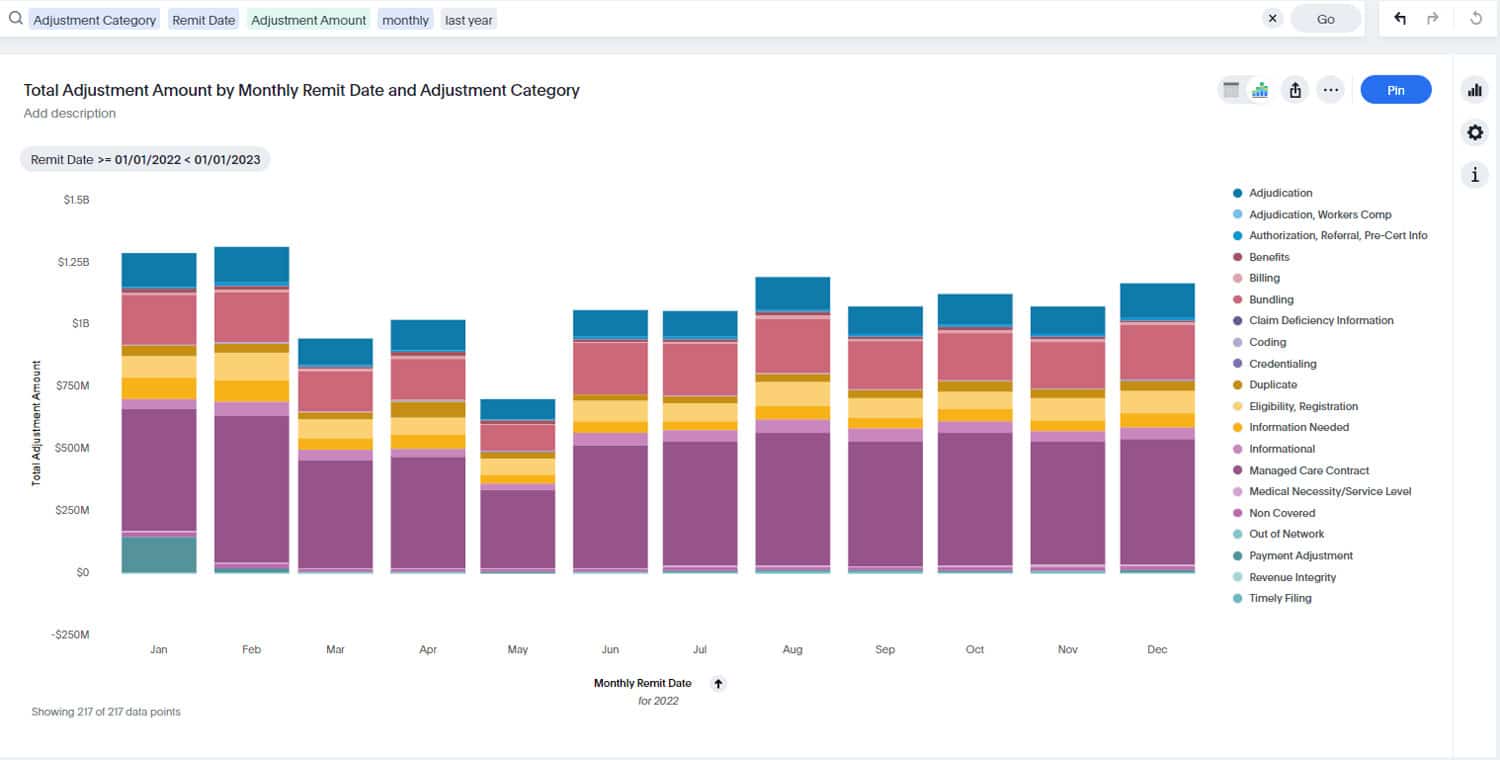Healthcare compliance teams, coding auditors, and revenue cycle leaders face an ever-growing challenge: keeping up with audits and compliance checks in an increasingly complex environment. Revenue retention is now as critical as revenue growth for healthcare organizations, meaning there’s more pressure than ever to ensure every claim is compliant and every dollar earned is retained.
The Growing Pressure on Healthcare Compliance and Audit Teams
In an era marked by frequent regulatory changes, shifting reimbursement models, and increasing scrutiny, healthcare organizations must adapt. Government and payer oversight is ramping up: in FY 2023, federal anti-fraud programs received nearly $2.5 billion in funding, yielding an $8 return for every $1 invested in Medicare integrity audits.
Healthcare providers are feeling the squeeze from all sides:
- Payer post-payment audits have exploded by over 900% in the post-pandemic era
- Many revenue cycle teams face staffing cuts of 50% or more
- Denial rates for inpatient hospital claims jumped 9.6% in a single year
- Medicare accounts for 82% of all denials
- During 2022, 28% of COVID-19-related charges were initially rejected by payers, representing roughly a $50 million revenue risk for a large health system
Challenges of Traditional Audit Workflows
For years, many organizations handled coding, billing, claims, and auditing as separate tasks in different departments, with tedious manual workflows slowing down claims submissions, payments, and compliance functions
Traditional methods struggle with:
- Labor-intensive processes prone to human error
- Reactive approaches rather than continuous scanning for issues
- Heavy reliance on rudimentary tools – 40% of compliance teams still use basic tools like Word documents and spreadsheets
- Siloed workflows hindering collaboration
The Compliance Hours Burden: A significant portion of organizations dedicate thousands of staff hours each year to compliance and auditing tasks:
- Only 25% of organizations spend less than 1,000 hours annually on compliance
- 35% spend between 1,000 and 4,999 hours a year
- 40% spend over 5,000 hours
What is Audit Workflow Automation?
An audit workflow tool is a software platform that automates and manages the end-to-end process of auditing. Instead of juggling spreadsheets and disparate systems, auditors work in one integrated workflow that can:
- Automatically pull data needed for audits
- Select random or risk-weighted samples
- Assign tasks to auditors with predefined timelines
- Enforce standardized steps for consistency
- Log results in a centralized database
- Generate instant reports and analytics dashboards
Modern audit workflow automation platforms are designed to handle all auditing types in one place. Leading solutions like MDaudit provide a single source of truth that unifies billing compliance, coding, and revenue integrity in a single platform.
Benefits of Automating the Audit Process
Implementing an automated audit workflow tool delivers several concrete benefits:
Greater Efficiency and Productivity
Automation drastically reduces time spent on manual tasks, allowing auditors to handle a higher volume of audits in less time. Hours saved can be reallocated to higher-value activities.
Improved Accuracy and Consistency
With standardized workflows and less manual handling, there’s less room for human error. The software ensures every audit follows the same procedure and documentation, creating a reliable audit trail.
Proactive, Risk-Based Focus
An automated solution enables continuous monitoring and risk-based auditing. Instead of finding problems months after the fact, the system flags potential issues in real time. This is crucial since 87% of organizations have seen negative outcomes from a reactive compliance approach.
Enhanced Collaboration and Transparency
When billing compliance, HIM/coding, and revenue integrity staff share a unified platform, it breaks down departmental silos. Using common technology and insight-sharing mechanisms can “break down silos among departments and truly transform billing practices while protecting revenue integrity”.
Better Revenue Protection
Automated audits help catch documentation or coding issues that could lead to denied claims or paybacks. Tools that combine workflow automation with continuous risk monitoring can quickly identify root causes of errors and prompt corrective action.
Risk-Based Auditing: Focus on What Matters
Risk-based auditing directs attention to areas of highest compliance risk. Modern audit tools make this approach feasible by analyzing large volumes of billing data to highlight outliers and red flags.
This “risk intelligent auditing” leverages analytics to mine billing and remittance data for compliance and revenue risks. The payoff is significant: addressing issues proactively often avoids costly downstream consequences.
Continuous Compliance Monitoring: Staying Ahead of Issues
Leading organizations implement continuous compliance monitoring, tracking key indicators on an ongoing basis. An automated system continuously scans billing data for anomalies, allowing issues to be addressed in real time.
This always-on vigilance means compliance becomes ingrained in daily operations rather than a periodic project. It’s no surprise that 91% of companies plan to implement continuous compliance in the coming years.
MDaudit: Streamlining Audits with a Unified, Intelligent Platform
MDaudit illustrates what a modern audit workflow tool can offer. It provides:
- A unified system for billing compliance, coding audits, and revenue integrity
- Advanced analytics and automation supporting a risk-based approach
- Real-time risk scoring and predictive analytics
- Automated audit workflows including data pulls and sample selection
- Continuous oversight flagging anomalies in near real time
- Robust analytics dashboards for drilling down into audit results
MDaudit has become a popular choice for healthcare organizations large and small, providing solutions to more than 70,000 healthcare providers and 1,500 facilities, including over 60 major U.S. health systems. It’s been called “the leading audit workflow automation and data analytics software” used by hospital and physician practice compliance professionals nationwide.
The results can be dramatic. One health system using MDaudit’s automated workflows managed to handle a tenfold increase in payer audit volume without adding headcount. In the past year alone, MDaudit’s platform helped healthcare clients successfully respond to roughly $100 million worth of payer audit demands while retaining 95%+ of the revenue under review.
Conclusion
The healthcare industry isn’t getting any simpler, and manual, reactive audit processes will no longer suffice. By embracing solutions like MDaudit, organizations can shift their auditing from a tedious necessity to a strategic advantage.
Streamlining audit processes through automation isn’t just a tech upgrade; it’s a smarter way of working. It empowers healthcare professionals to focus on what truly matters: ensuring accurate billing, educating providers and coders, and protecting the financial health of the organization so they can continue delivering quality patient care.







